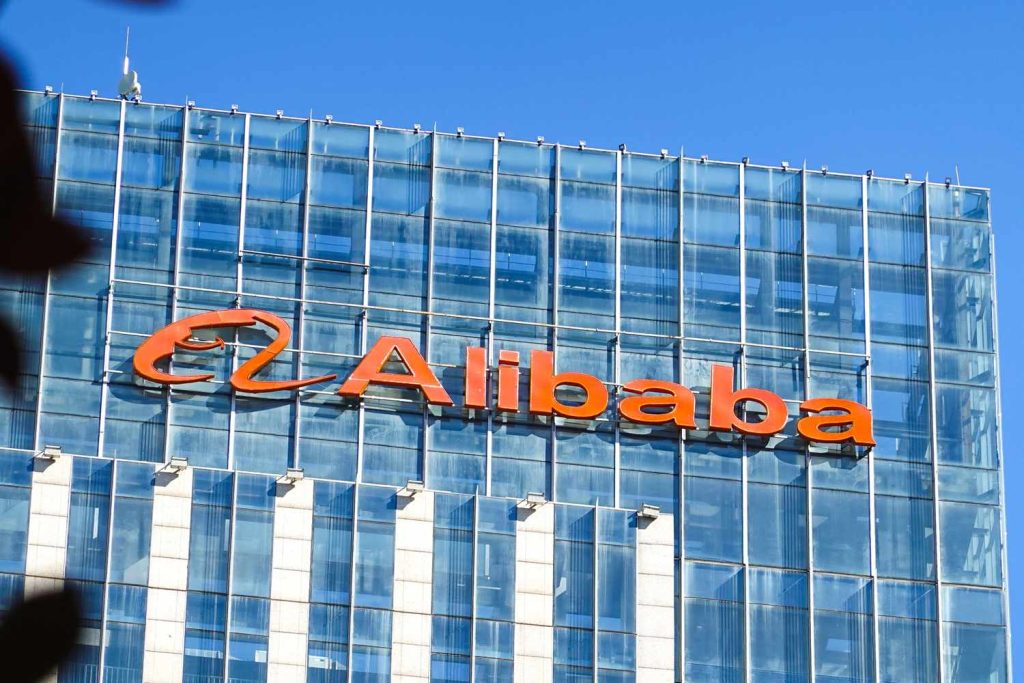Is Alibaba Stock a Hidden Gem? Unpacking the Future of China’s ECommerce Giant

In an era where ecommerce is evolving at lightning speed, Alibaba stands out as an enigma worth exploring. Once celebrated as the crown jewel of China’s digital economy, Alibaba’s stock has faced relentless scrutiny and volatility in recent times. But beneath the surface of regulatory challenges and market fluctuations lies a compelling narrative that could redefine its future. As consumers increasingly turn to online platforms for everything from retail to cloud services, Alibaba remains a key player with vast potential.
Is Alibaba stock truly a hidden gem waiting to be discovered? Join us as we delve into the intricate dynamics of this ecommerce titan, unpacking its financial health, growth prospects, and strategic maneuvers. Whether you’re a seasoned investor or simply curious about the evolution of commerce in China, this exploration promises insights that could reshape your view of Alibaba’s place in the global market.
Overview of Alibaba’s Business Model
Alibaba operates a multisided platform ecosystem, connecting buyers, sellers, and service providers across ecommerce, cloud computing, logistics, and fintech. Its core platforms include Taobao (C2C marketplace), Tmall (B2C platform for brands), Alibaba.com (global wholesale), Alipay (digital payments), and Alibaba Cloud (cloud services)。 These platforms synergize to create a seamless ecosystem, enabling businesses to manage supply chains, payments, and customer engagement efficiently.
The company’s “userfirst, AIdriven” strategy emphasizes improving customer experience through personalized recommendations, streamlined logistics, and AIpowered tools like Qwen 2.5Max, which outperforms competitors in AI benchmarks. Alibaba also monetizes via advertising, subscription services (e.g., 88VIP loyalty program), and transaction fees, with a growing focus on highmargin cloud and AI sectors.
Recent Performance of Alibaba Stock
As of April 29, 2025, Alibaba’s NYSElisted shares (BABA) trade at $118.88, up 0.43% YTD, with a market cap of $283.7 billion. The stock surged nearly 11% on February 21, 2025, after Q3 FY2025 results showed 8% YoY revenue growth ($280.15 billion RMB) and a 333% jump in net income. Analysts attribute this rebound to stabilizing ecommerce GMV, AIdriven ad monetization, and aggressive share buybacks ($387.4 billion spent since 2023)。
Despite geopolitical tensions and earlier regulatory pressures, Alibaba’s pricetoearnings (P/E) ratio of 17.41 and dividend yield of 0.82% reflect cautious optimism.
Key Factors Influencing Alibaba’s Future Growth
1. AI and Cloud Computing: Alibaba plans to invest more in AI and cloud infrastructure over the next three years than in the past decade. Its Tongyi Qianwen AI model supports applications in healthcare, logistics, and customer service, while Alibaba Cloud dominates Asia’s IaaS market.
2. International Expansion: Platforms like AliExpress (crossborder retail) and Lazada (Southeast Asia) are key growth drivers. AliExpress’s “full hosting” model simplifies logistics for global sellers, contributing to 70% of its orders.
3. 88VIP Program: With 42 million highspending members, this loyalty program drives 25% of TaobaoTmall GMV through perks like free shipping and exclusive discounts.
The Impact of Regulatory Changes on Alibaba stock
China’s 2021–2025 regulatory crackdown initially hurt Alibaba, including a $2.8 billion antitrust fine in 2021. However, recent policy shifts signal easing scrutiny. For example, President Xi Jinping’s 2025 meeting with Jack Ma revived investor confidence.
Stricter data privacy laws and antitrust rules remain risks, but Alibaba’s compliance efforts—such as restructuring its TaobaoTmall leadership and adopting transparent pricing—have mitigated backlash.
Competitive Landscape: Alibaba vs. Other ECommerce Giants
Domestic Rivals: JD.com and Pinduoduo challenge Alibaba with lower prices and faster delivery. Pinduoduo’s social commerce model and JD’s logistics network pressure Alibaba’s market share.
Global Competitors: Amazon and Sea Limited (Shopee) compete in international markets. Alibaba’s edge lies in its integrated ecosystem and costeffective crossborder solutions.
Financial Metrics: Alibaba’s ROE (24.1%) and dividend yield (0.8%) outperform JD (10.3% ROE, no dividend) and Pinduoduo (15.6% ROE)。
Financial Health: Analyzing Alibaba’s Earnings Reports
Alibaba’s Q3 FY2025 highlights:
Revenue: $389.69 billion (8% YoY growth)。
Net Income: $68.08 billion (333% surge due to costcutting and AIdriven ad monetization)。
Cash Flow: $98.56 billion operating cash flow supports dividends and R&D.
Debt: Low leverage with a 40.98% debttoasset ratio.
The company’s $261.4 billion remaining share buyback plan further boosts shareholder returns.
Alibaba Stock:Expert Opinions and Analyst Ratings
Goldman Sachs: Upgraded price target to $160 (37% upside), citing cloud growth and AI potential.
Lyon Securities: Raised target to $165, highlighting Alibaba’s “highconfidence outperformance” in ecommerce and tech.
Ryan Cohen: The “meme stock king” acquired $1 billion in BABA shares, signaling bullishness on China’s tech rebound.
Risks and Challenges Facing Alibaba
1. Geopolitical Tensions: U.S.China trade wars and tariffs threaten crossborder operations.
2. Regulatory Uncertainty: Potential antitrust probes or data laws could disrupt operations.
3. Market Saturation: Slowing ecommerce GMV growth in China necessitates innovation.
4. AI Competition: Rivals like Tencent and Baidu are advancing rival AI models.
Conclusion: Is Alibaba Stock Worth the Investment?
Alibaba presents a compelling mix of value and growth. Its dominance in Chinese ecommerce, AI leadership, and global expansion strategies position it for longterm gains. However, geopolitical risks and regulatory hurdles require vigilance.
For investors with a 3–5 year horizon, BABA’s undervalued P/E ratio (vs. sector average of 25x) and aggressive buybacks make it a buy. Diversify with defensive stocks to hedge against volatility.
*Note: Always consult a financial advisor and review Alibaba’s latest filings before investing.*